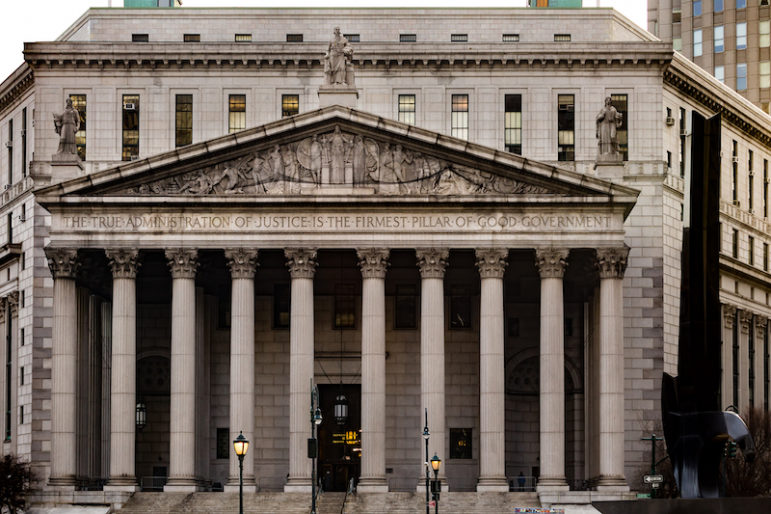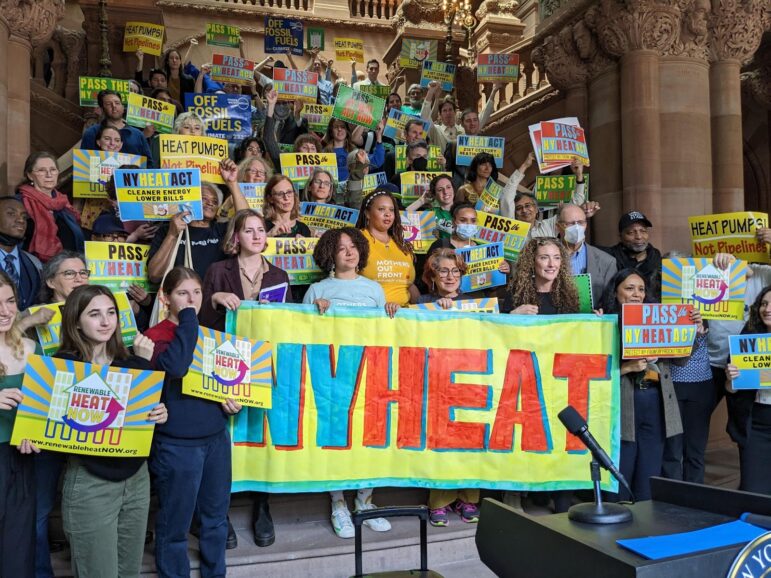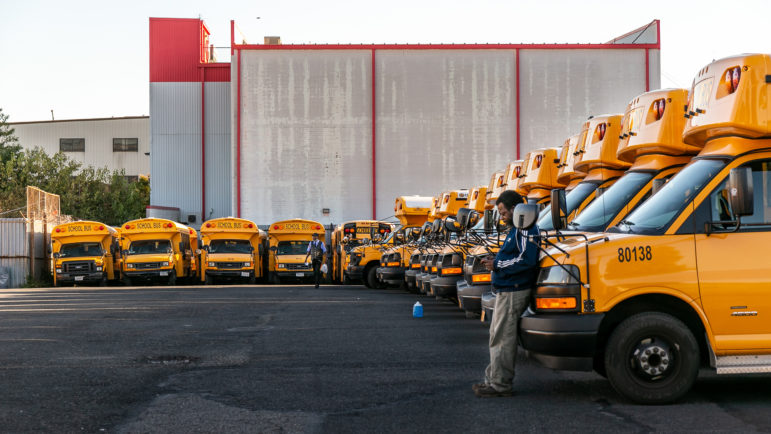Melrose residents are hopeful that the U.S. Environmental Protection Agency’s involvement can push the state Department of Conservation to establish a clear timeline for superfund remediation, and enforce communication with the community.
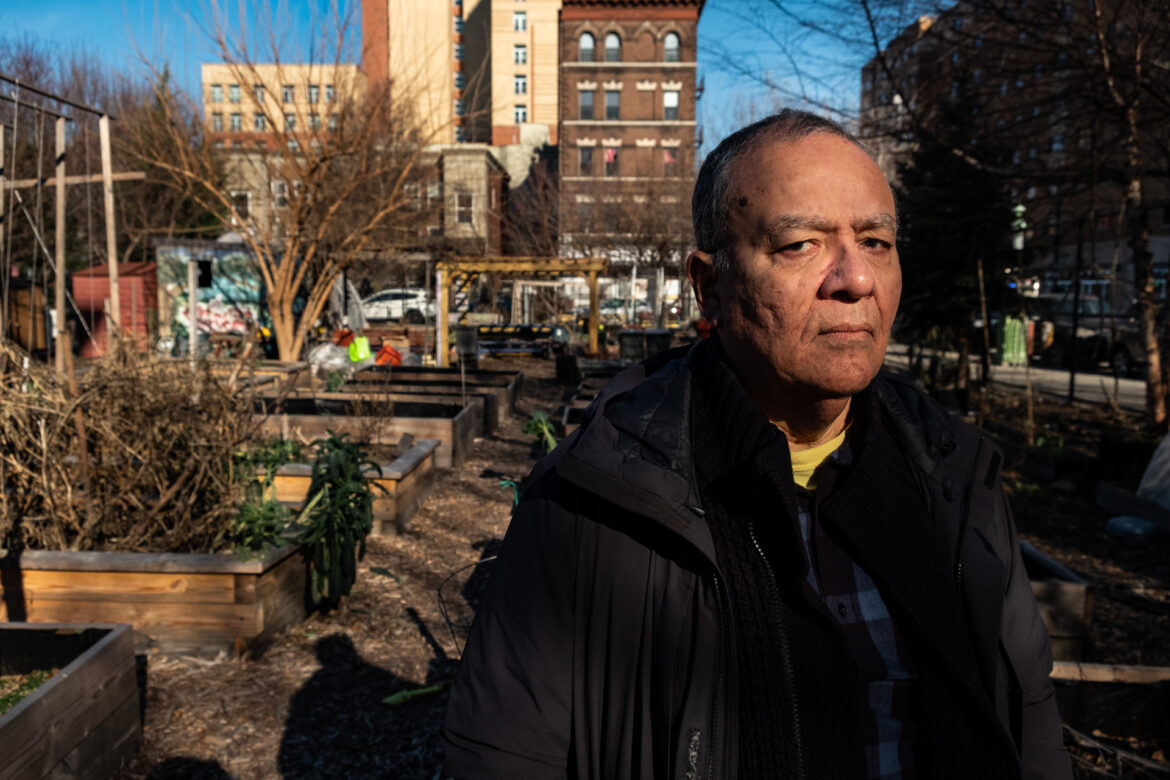
Adi Talwar
Angel Garcia at the Rainbow Garden of Life and Health on Melrose Avenue in the South Bronx. He and other neighbors have been pushing the state to clean up the lot next door to the garden, a designated brownfield site.When Angel Garcia and his neighbors at the Rainbow Garden of Life and Health were looking to expand their community garden, they discovered a major problem: the vacant lot next door had elevated levels of toxic chemicals that had spread along six blocks on Melrose Avenue, an issue New York State has been studying since 1997, largely unknown to Melrose residents.
Now, he and fellow Melrose residents are putting pressure on the New York State Department of Conservation (DEC) to begin remediation of the site, which neighbors say is the latest in a years-long battle to establish a clear cleanup timeline and to get regular updates from the state agency.
On Nov. 19, U.S. Environmental Protection Agency (EPA) Regional Director Lisa Garcia visited the site of the contamination and toured the areas affected with members of the Melrose Environmental Awareness Committee (MEAC), a group of local residents.
They’re now hoping the federal visit could push the state agency to finally create a remediation schedule for the contaminated site, and offer neighbors more frequent updates on the project.
“Our job…is gonna be to talk to the state, to figure out what has been happening since the assessment, and if there’s any support that we can give to move things along, and obviously to number one, inform the community of where the DEC is with the site,” said Lisa Garcia.
DEC previously categorized the site as a Class 2 State Superfund in its assessment, which under New York’s inactive hazardous waste disposal program poses “a significant threat to public health or the environment.”
Although the DEC only verified the site’s contamination in 2013, sampling began in 1997, according to past study, when the DEC investigated a petroleum spill at a nearby firehouse. It found elevated levels of tetrachloroethene, or PCE, in the groundwater and soil gas, a harmful substance used by a former dry cleaners that occupied the lot on 753 Melrose Ave. Short term exposure to PCE can cause headaches or dizziness while long term exposure can increase the risk of various cancers, according to the Centers for Disease Control and Prevention.
The DEC has conducted multiple investigations since 2003, including collecting samples of soil, soil vapor, and groundwater, with only the latter showing elevated levels of PCE. The site has been vacant since the building that housed the dry cleaners was torn down in 1968, according to the agency. It’s owned by the city’s Department of Housing, Preservation and Development and is zoned for residential use.

Adi Talwar
A Brownfield site adjacent to the Rainbow Garden of Life and Health on Melrose Avenue in the South Bronx.“Because there is no on-site building, inhalation of site contaminants in indoor air due to soil vapor intrusion does not represent a concern for the site in its current condition,” the DEC’s site assessment notes. “However, the potential exists for the inhalation of site contaminants due to soil vapor intrusion for any future on-site development.”
In August, the DEC proposed a $3.4 million remediation plan that could take up to 10 years to complete, performing a chemical oxidation process that would lower the toxin levels of the groundwater until it no longer constitutes a risk.
DEC policy recommends that locations designated as Potential Environmental Justice Areas, like the Melrose site—a designation based on the area’s poverty levels and demographics— should see increased communication with the agency that goes beyond the minimum public engagement requirements.
Although the DEC says it has been engaging with community stakeholders about the site since 2013, members of the MEAC claim they were not made aware of contamination until they had found public reports on the agency’s website in 2021. According to local Community Board 1, updates were scarce until residents pushed the agency for action.
“If we were on Madison Avenue, [the] Upper East Side… we would be getting an absolutely 180-degree difference in terms of treatment,” said Angel Garcia, who helps run the community garden next door and has been the main liaison for the MEAC and the state and federal agencies. “We want the Madison Avenue treatment for Melrose Avenue.”
The group has also not had any in-person meetings with the DEC staff, who are located in Albany. The relationship faltered further when residents spotted a private DEC-contracted company drilling for samples nearby in late July, work the MEAC members said they weren’t informed about.
Their main concern, however, was that they had not received a Citizen Participation Plan from the DEC until August of this year.
The plan states that the DEC will hold public meetings and send letters to properties in the affected area with status updates, one in 2024, and another in 2025. As of December, residents stated that they have not received any mail from the DEC regarding the project.
The last mention of a proposed timeline from the DEC was in a November 2023 newsletter to stakeholders that stated the project would begin in 2024, which has yet to happen. A DEC spokesperson told City Limits that the remediation plan design is underway and will be finalized and communicated to stakeholders by 2025.
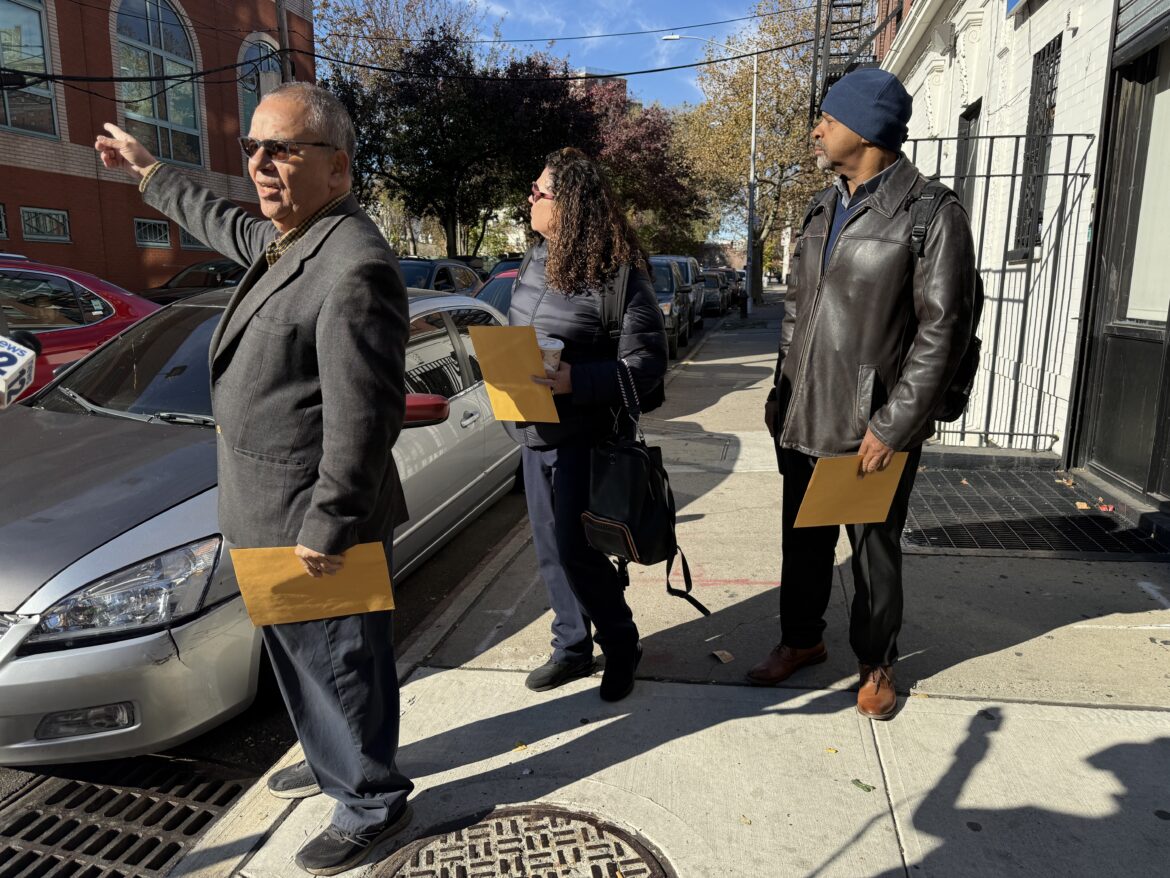
Marina Samuel
Angel Garcia, left, with EPA officials and community members on a tour of the impacted area on Nov. 19.Cesar Yoc, Chairman of Bronx Community Board 1’s Environmental Justice and Sanitation Committee, expressed hesitancy about the EPA’s involvement in the project, particularly with the incoming Trump administration’s claim to cut the federal agency’s funding.
“One year from now [the EPA] might not have any capacity. They might not even have an engagement team for the South Bronx,” said Yoc.“The [EPA] has to do it now and they have to do it soon.”
City Limits reached out to the DEC for comment, and in response, the agency provided the following statement.
“New York State has a proven track record of successfully investigating and cleaning up contamination across New York City and the state, including sites… located in the Bronx,” the statement said.
“DEC prioritizes the protection of public health by working closely with our partners at the state Department of Health (DOH) to eliminate any potential exposure pathways. DEC then determines the appropriate cleanup that will be fully protective of the environment and the community.”
To reach the editor, contact Jeanmarie@citylimits.org
Want to republish this story? Find City Limits’ reprint policy here.


